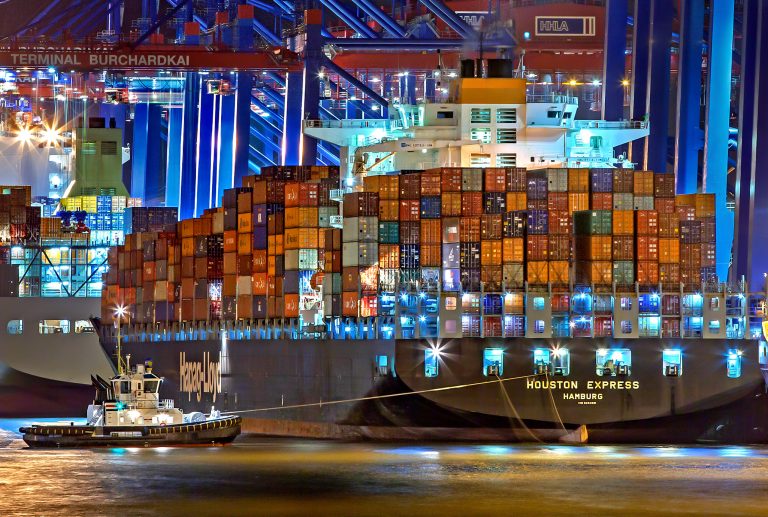Circular Economy: Data and Indicators
The Circular Economy (CE) promotes the cyclical use of materials to minimize the extraction of virgin materials. Consequently, this approach reduces the environmental impacts of extraction and manufacturing, such as greenhouse gas emissions or biodiversity loss, and decreases an economy’s dependency on foreign resources (see Circular Economy: a Smart Way of Using Materials).
To track an economy’s progression towards circularity, different indicators can be used. Five main indicator groups relate to the material aspect of a circular economy: raw material consumption (RMC), waste generation and treatment, recycling and recovery rates, circularity rates, and material stocks. The RMC is a key indicator for analysing material flows and is rapidly gaining political relevance. For data and background information on the RMC, please refer to the Visualization Centre, the Methods page, or one of our related stories (e.g.: The concept of material consumption).
For the other CE indicator groups, the main sources of data are the Statistical Office of the European Union (Eurostat) and the OECD Database. Hence, to date, country comparisons are restricted by data availability. Below, the main concepts and ways of analysing the principal indicators are explained using the Circularity Viewer, available on this website. A large number of these indicators described below are also part of the European Union’s revised monitoring framework for the circular economy.
For other aspects of the circular economy, such as new business models to extend product use (sharing, leasing, etc.), the link to material flows is less obvious, and data availability even less satisfying. Hence, these topics are not covered here.
The Role of Waste
A circular economy reduces demand for primary raw materials by preventing and recycling waste. Therefore, analysing the production volumes and treatment of waste is a way to evaluate the extent of an economy’s circularity.
When waste is not recycled or recovered valuable resources like materials or energy are lost. But waste management itself can be a source of resource expenditure and environmental impacts. Hence, the primary goal of the circular economy must be to reduce waste generation by lengthening the utility of products and materials, delaying their disuse and disposal.
No global datasets for country specific waste generation currently exist, but information is available for municipal waste. And while municipal waste is but a fraction of overall waste (11% in the EU-27 in 2020), it is useful in assessing an economy’s circularity due to its direct link to consumption patterns.
For example, in 2018 the per-capita municipal waste in Switzerland amounted to around 700kg. This high volume can be explained by high incomes and corresponding consumption patterns. In comparison, the EU-27 average was 500kg per capita. These numbers indicate enormous potential for a reduction in waste and through the implementation of a circular economy.
In the EU, for example Bulgaria, Slovenia, and Romania showed a decline in per-capita municipal waste between 1995 and 2021, suggesting a successful implementation of waste prevention policies. In contrast, in the Czech Republic, Latvia, and Belgium numbers increased substantially in the same period. Indicating that here circular economy policies must be given higher priority.
Waste prevention is only one aspect. Sound waste management dictates that unavoidable waste should be recycled or recovered. The larger the share of recycled waste, in overall waste production the better.
Recycling and Recovery Rates
Recycling is central to a circular economy. It reduces the need for virgin materials, contributing to sustainability, and reduces dependency on imports of raw materials. Waste recovery is a special term for the recycling of waste originating from construction activities. The ratio between the amount of waste recycled or recovered and the total amount generated reveals the recycling or recovery rates.
As global data for waste generation is scarce, so is data for recycling and recovery rates. Comprehensive data is provided only by Eurostat for European countries. The figure below shows that between 2010 and 2020 recycling rates increased, reaching almost 60% in the EU-27. This points to progress in waste management, especially in the form of decreased per-capita waste production.
Large differences in recycling rates nonetheless exist among individual waste streams. In 2018 in the EU-27, average recycling rates ranged from 39% for electrical and electronic waste, to 66% for packaging waste, and 88% for construction waste.
40% of all waste was recycled in the EU-27 in 2020, and 13% was backfilled (i.e., recovered). For unavoidable waste that is not recyclable or recoverable, incineration with energy recovery is usually the next best option, although waste combustion generates emissions and air pollution. In the EU-27 in 2020, 6.5% of waste was incinerated with energy recovery. Of the remaining waste, a large part (32%) was landfilled. Landfills take up land and also generate emissions and pollute air, water, and soil. Consequently, after waste prevention, maximizing recycling rates is one of the principal goals of a circular economy.
It must be noted that recycling rates are not indicative of a reduction in virgin material inputs. For this, the Circularity Rate or similar indicators are used.
Circularity Rates
To assess how much of an economy’s demand for raw materials is met with secondary materials, indicators measuring the share of secondary materials in total material demand can be used.
The Circularity Rate quantifies the share of secondary materials consumed in total processed raw materials (i.e. raw material consumption (RMC), plus secondary materials consumed). For 2023 data indicates the global economy to be 7% circular (Circularity Gap Report 2023), and that more than 90% of materials were wasted, lost, or unavailable for reuse because they are locked in material stocks such as buildings and infrastructure. Large differences exist among countries, even within the European Union. A 2020 case study for the Netherlands showed that 42.5% of used materials were secondary raw materials, whilst in Norway only 2.4% of them were.
Whereas the Circularity Rate takes into account indirect material flows (see The Circularity Gap Report 2023, Methods), the Circular Material Use Rate (CMUR) of the European Union focuses on direct material flows, comparing the amount of recycled materials to the total domestic material input (DMI; see Methods page).
Between 2010 and 2021, Croatia and Latvia respectively increased their CMUR from 1.6% to 5.7%, and from 1.2% to 6.2%. The Netherlands, Europe’s frontrunner, from 25.3% to 33.8%. But progress was not linear as some countries worsened, such as Finland decreasing its CMUR from 13.5% to 2.0%.
Material Stocks
Some materials entering the global economy are used for short-lived, products such as food. Others are longevous, so-called ‘material stocks’, confined in buildings, infrastructures, and heavy machinery (see our story on material stocks). Materials in material stocks are unavailable for recycling for as long as they remain in use, and their maintenance and repair shape current and future resource use and therefore circularity of an economy.
In 2015, material stocks in the European countries (“Industrial Old World”) were estimated to be 250 gigatonnes, in Canada, USA, and Australia (“Industrial New World”) 172 gigatonnes, and in the Former Soviet Union (FSU) 95 gigatonnes. China’s material stock in 2015 was 314 gigatonnes, having surged since the 1980s, as industrialisation drives countries’ stock growth rates to increase.
Once stocks reach the end of their lives, the confined materials are potentially available for reuse (i.e. direct use of components) and recycling. Closing the material loop through so-called “urban mining”, i.e. the exploitation of material stocks, can prevent input of virgin materials.
Measuring progression towards a circular economy is challenging. While the notions are established, the tools are less so. Data must considerably improve to allow for country comparisons, to identify front runners and those lagging behind, and to discover hotspots for action.


